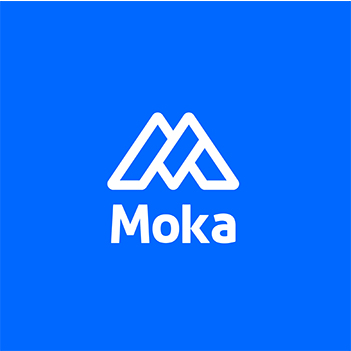How HR Leaders Can Tackle Remote Work Fatigue in 2025

Remote Work Fatigue: What HR Leaders Need to Address is no longer just a buzzword—it’s a growing challenge in 2025. With 69% of remote employees reporting burnout, tackling this issue has become more critical than ever. You’ve likely observed how the blurred boundaries between work and life are impacting your team’s well-being. While remote employees are 35-40% more productive than their in-office counterparts, remote work fatigue can quickly erode these productivity gains. As an HR leader, addressing Remote Work Fatigue: What HR Leaders Need to Address is essential to fostering balance, supporting well-being, and sustaining productivity. The time to act is now.
Key Takeaways
Spot signs of remote work tiredness early. Watch for trouble focusing, moodiness, or lower work output to act before it gets worse.
Support work-life balance by urging workers to set work hours and take breaks. This lowers stress and boosts health.
Encourage open talks in your team. Regular chats and feedback build trust and help workers feel less lonely.
Offer mental health help like online counseling and stress workshops. These tools help workers handle problems better.
Use technology smartly. Pick tools that keep workers involved without stressing them. Simple tools help work stay on track.
Remote Work Fatigue: What HR Leaders Need to Address
Causes of Remote Work Fatigue
You’ve probably noticed that remote work isn’t as easy as it seems. While it offers flexibility, it also comes with challenges that can lead to fatigue. One major cause is overwork. Many remote employees feel the pressure to prove their productivity, leading to longer hours. In fact, 48% of remote workers often work outside their scheduled hours, and 44% report working more hours now than they did a year ago.
Another culprit is the sheer number of meetings. Virtual communication tools, while helpful, can become overwhelming. Around 20% of employees cite too many meetings as a key factor in their burnout. Heavy workloads, insufficient pay, and the inability to disconnect from work also contribute to the problem.
Here’s a quick breakdown of some statistics:
Cause of Fatigue | Percentage |
|---|---|
Heavy workload and overwork | 32% |
Long hours | 27% |
Too many meetings | 20% |
Insufficient pay | 23% |
It’s clear that these factors are taking a toll. Over 50% of workers report experiencing burnout, with Millennials (66%) and Gen Z (56%) being the most affected.
Recognizing Symptoms of Fatigue
Spotting the signs of Remote Work Fatigue early can make all the difference. Employees often show symptoms like mental fatigue, emotional exhaustion, and reduced productivity. You might notice team members struggling to focus or missing deadlines.
Isolation is another red flag. Remote workers who lack supportive connections with coworkers often feel disconnected and uninspired. This can lead to emotional exhaustion, which is one of the most common symptoms of burnout.
Keep an eye out for these signs:
Difficulty concentrating or staying motivated.
Increased irritability or frustration.
A noticeable drop in work quality or output.
By understanding these symptoms, you can step in before fatigue turns into a bigger issue.
Strategies to Combat Remote Work Fatigue

Promoting Work-Life Balance
Helping your team achieve work-life balance is one of the most effective ways to combat remote work fatigue. When employees feel they can disconnect from work, they’re less likely to experience burnout. You can start by encouraging clear boundaries between work and personal life. For example, suggest that employees set specific work hours and avoid checking emails after hours.
Flexible schedules also make a big difference. Many remote workers appreciate the ability to adjust their workday to fit their personal needs. In fact, 85% of exclusively remote workers say improved work-life balance is one of the greatest benefits of working from home. Hybrid work arrangements are another option. Studies show that 76% of full-time hybrid workers report better work-life balance compared to other setups.
You can also help by clarifying work expectations. Employees who understand what’s expected of them are 47% less likely to experience burnout. This simple step can reduce stress and improve productivity.
Fostering Open Communication
Open communication builds trust and reduces feelings of isolation. Regular check-ins are a great way to stay connected with your team. These conversations don’t have to be formal. A quick chat about how they’re feeling or what challenges they’re facing can go a long way.
Feedback is another powerful tool. When employees feel heard, they’re more engaged and less likely to experience fatigue. Research shows that 89% of HR leaders believe ongoing peer feedback and check-ins are crucial for successful remote work outcomes. Some companies even use bi-weekly surveys to monitor morale. One tech company saw a 20% increase in retention rates after implementing this strategy.
Providing Mental Health Resources
Mental health support is essential for combating remote work fatigue. You can start by offering resources like virtual counseling sessions or stress management workshops. These tools give employees the support they need to handle challenges effectively.
A well-designed home office also contributes to mental well-being. Research shows that ergonomic setups improve both mental and physical health. Encourage your team to create a workspace that minimizes distractions and promotes focus.
Finally, remind employees to take breaks. Short pauses during the day can refresh their minds and boost productivity. Even a five-minute walk can make a big difference.
Leveraging Technology Without Overwhelming Employees
Tools to Enhance Engagement
Technology can be a game-changer for keeping your remote team engaged. The right tools not only simplify workflows but also foster collaboration and connection. For example, Microsoft Teams has been a favorite for many companies. It has boosted collaboration by 20% and increased overall productivity by 75%. Similarly, Zoom’s performance management tools have led to a 40% rise in engagement and a 45% improvement in employee satisfaction.
Here’s a quick look at how companies are leveraging technology to enhance engagement:
Company | Initiative/Tool | Engagement Increase | Productivity Impact |
|---|---|---|---|
Microsoft | Work-Life Balance initiative | 20% | 30% rise in project delivery timelines |
Zoom | Performance management tools | 40% | 45% increase in employee satisfaction rates |
Microsoft | Microsoft Teams | 20% increase in collaboration | 75% boost in overall productivity |
You can also use tools that provide frequent feedback. Research shows employees who receive regular feedback are 3.5 times more likely to feel engaged. By integrating these tools into your remote work strategy, you can create a more connected and motivated team.
Avoiding Technology Overload
While technology can help, too much of it can overwhelm your team. You’ve probably seen how constant notifications and endless apps can lead to frustration. To prevent this, focus on proactive planning. Choose tools that integrate seamlessly and reduce the need for switching between platforms.
A well-designed home office can also make a big difference. Encourage your team to invest in ergonomic furniture and maximize natural light. These small changes reduce stress and improve focus. Reliable IT connectivity is another must-have. Employees with unstable internet often experience lower productivity, so providing support for better connections can go a long way.
Remember, the goal is to simplify, not complicate. By being intentional with your tech choices, you can help your team stay productive without adding to their Remote Work Fatigue.
Building a Supportive and Inclusive Remote Work Culture

Encouraging Team Connection
Creating a sense of connection among remote teams is essential for reducing fatigue and boosting morale. When employees feel connected, they’re more engaged and less likely to experience burnout. So, how can you foster team connection in a virtual environment?
Start by encouraging regular check-ins. These don’t have to be formal. A quick video call to discuss progress or share updates can make a big difference. Did you know that 62% of remote employees prefer being on-camera during meetings? Seeing familiar faces on screen helps reduce feelings of isolation for 16% of them. It’s a simple way to remind your team that they’re part of something bigger.
You can also organize virtual team-building activities. Think trivia games, online escape rooms, or even a virtual coffee break. These activities give your team a chance to bond beyond work tasks. When employees feel valued and heard, they’re more likely to stay motivated and productive.
Finally, make sure your team understands the organization’s goals and priorities. Clear communication fosters a sense of purpose and helps everyone stay aligned. When employees know how their work contributes to the bigger picture, they feel more connected and less fatigued.
Prioritizing Diversity and Inclusion
Building an inclusive culture isn’t just the right thing to do—it’s also a smart business move. Employees who feel included are more likely to stay with your company and perform at their best. Research shows that creating an inclusive workplace fosters a sense of belonging, which directly impacts retention and organizational success.
Here’s a quick look at the benefits of diversity and inclusion:
Evidence Type | Findings | Impact on Retention |
|---|---|---|
DEI Practices | Creating an inclusive workplace fosters a sense of belonging | Directly impacts employee retention |
Communication Strategies | Companies prioritizing effective communication enjoy a 25% higher retention rate | Enhances employee satisfaction and loyalty |
Feedback Mechanisms | Organizations that act on employee feedback reduce turnover by 14% | Promotes a healthy organizational climate |
You can start by normalizing remote work as a standard practice. About 65% of employees say this is one of the best ways to support remote and hybrid work. Additionally, embrace feedback mechanisms. Listening to your team and acting on their suggestions can reduce turnover by 14%. It also saves your company money—around $4,000 for every employee retained.
By prioritizing diversity and inclusion, you’re not just creating a supportive culture. You’re also setting your team up for long-term success.
Future-Proofing HR Strategies for Remote Work
Adapting to Evolving Trends
Remote work is here to stay, and staying ahead of the curve means adapting to new trends. By the end of 2025, 70% of the global workforce is expected to work remotely at least five days a month. This shift shows how important it is to invest in remote work infrastructure. Companies that embrace these changes will be better prepared for future challenges.
You’ll also notice a rise in hybrid and gig work. The gig economy is growing fast, with more organizations relying on freelance and contract workers. This trend calls for new management strategies to ensure smooth collaboration. At the same time, digital skills are becoming essential. Upskilling your team in areas like data analysis and virtual communication will keep them competitive.
Here’s a quick look at key trends shaping the future of work:
Trend | Description |
|---|---|
Remote and Hybrid Work | Flexible work arrangements are now a necessity, not a luxury. |
Gig Economy | Freelancers and contractors are playing a bigger role in the workforce. |
Digital Skills and Upskilling | Advanced digital skills are critical for staying relevant. |
Diversity, Equity, and Inclusion | DEI initiatives are vital for attracting and retaining top talent. |
Well-being and Mental Health | Supporting mental health and work-life balance is more important than ever. |
By staying proactive, you can align your HR strategies with these trends and create a resilient workforce.
Preparing for Hybrid Work Models
Hybrid work is becoming the new normal. In America, 29% of workers already follow a hybrid schedule, and this number is expected to grow. Hybrid setups offer flexibility, which 95% of business leaders say improves team performance. Employees also benefit, with hybrid workers experiencing 15% fewer burnout symptoms compared to fully remote or in-office teams.
The financial benefits are hard to ignore. Companies can save up to 50% on office space, while remote workers save an average of $11,000 annually. These savings make hybrid work a win-win for both employers and employees.
To prepare for this shift, focus on creating clear policies. Define when and how employees should work on-site versus remotely. Invest in tools that support collaboration, like project management software and virtual meeting platforms. Finally, prioritize communication. Regular updates and feedback loops will help your team stay connected and productive.
By embracing hybrid work, you’ll not only boost engagement but also future-proof your organization for the evolving workplace.
Addressing remote work fatigue requires a mix of thoughtful strategies and consistent effort. Start by fostering open communication. Encourage employees to share their struggles. Scheduling time between meetings can ease pressure and improve mental health.
Creating a positive work climate also makes a big difference. Companies with effective communication strategies see a 25% higher retention rate. Employees in supportive environments are 70% more likely to stay for two years, and satisfaction increases by 30%.
Metric | Evidence |
|---|---|
Ongoing peer feedback | 89% of HR leaders agree it's key for success |
Employee satisfaction rise | 30% in organizations with a positive climate |
Retention likelihood | 70% of employees likely to stay for 2 years |
By prioritizing well-being and staying adaptable, you can build a resilient, engaged workforce ready for the future.
FAQ
What is remote work fatigue, and how can you identify it?
Remote work fatigue happens when working from home leads to mental and emotional exhaustion. You might notice signs like trouble focusing, feeling unmotivated, or being easily irritated. If your team seems disconnected or overwhelmed, it’s time to address the issue.
How can HR leaders encourage work-life balance?
You can promote work-life balance by encouraging employees to set clear work hours and take regular breaks. Flexible schedules also help. Suggest creating a dedicated workspace at home to separate work from personal life. These small changes can make a big difference.
What tools can help reduce remote work fatigue?
Collaboration tools like Microsoft Teams or Zoom can improve communication and engagement. However, avoid overwhelming your team with too many apps. Choose tools that integrate well and simplify workflows. Regular feedback tools also help employees feel connected and valued.
How can you support employees’ mental health remotely?
Offer virtual counseling sessions or stress management workshops. Encourage short breaks during the day to recharge. A well-designed home office with ergonomic furniture and good lighting can also boost mental well-being. Remind your team to prioritize self-care.
Why is fostering team connection important in remote work?
Team connection reduces feelings of isolation and boosts morale. Regular check-ins, virtual team-building activities, and clear communication help employees feel valued and aligned with company goals. When your team feels connected, they’re more engaged and less likely to experience burnout.
See Also
Boost Team Performance With Effective Talent Management Solutions
Improving Employee Satisfaction With MokaHR's Talent Solutions
Enhancing Business Productivity Through MokaHR's HR Tools
Increasing Operational Effectiveness Using MokaHR's HR Management
From recruiting candidates to onboarding new team members, MokaHR gives your company everything you need to be great at hiring.
Subscribe for more information

